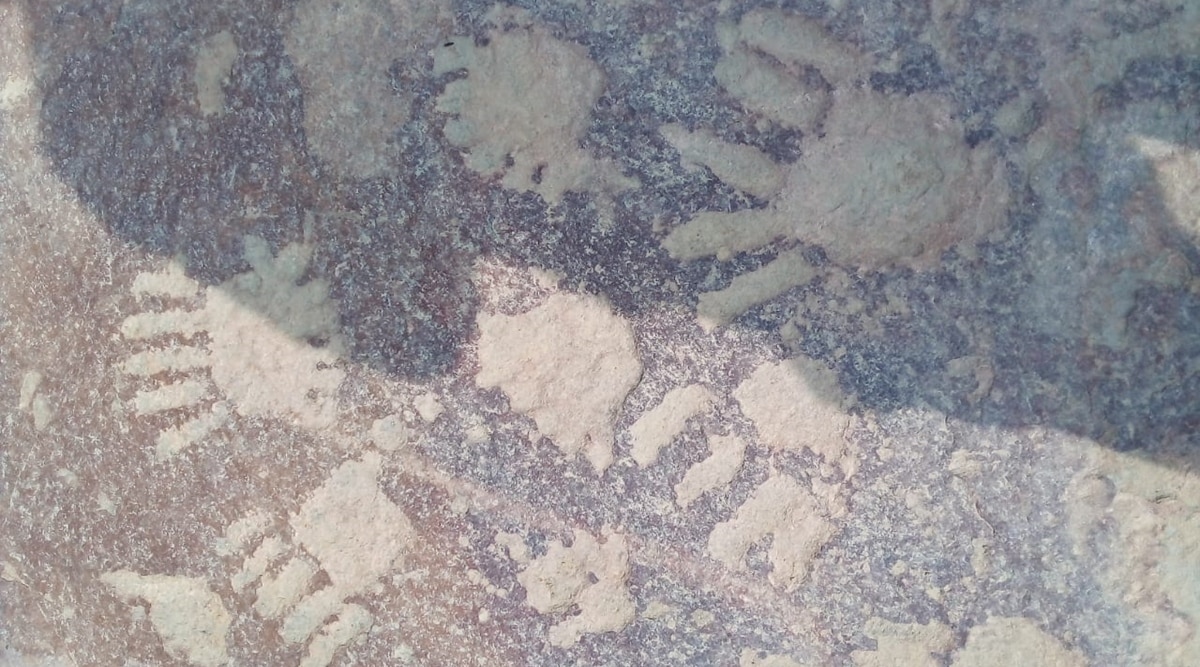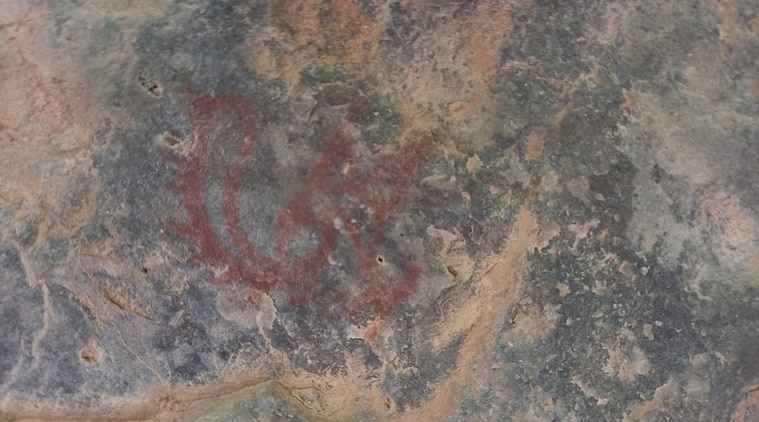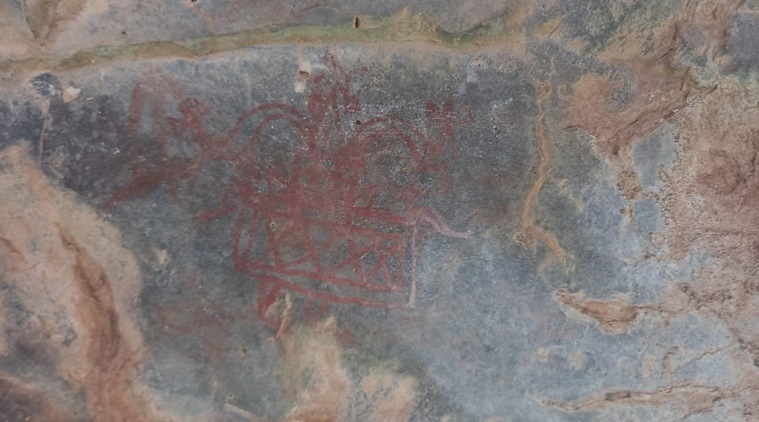Discovered in Faridabad: Prehistoric cave paintings that could be almost 1 lakh years old
The cave paintings first came to light in May this year when an environmental activist, Sunil Harsana, spotted them in Mangarbani hill forest in the Faridabad district of Haryana.
 Petroglyphs discovered at the Mangerbani site.
Petroglyphs discovered at the Mangerbani site.
Archaeologists in Haryana have estimated that a prehistoric site Faridabad’s Mangar Bani hill forest, from where cave paintings were discovered recently, may be up to a lakh years old.
“On the basis of tool topology, it can be said that the date of prehistoric habitation at the site may be from about 1,00,000 to about 15,000 years ago. But we have also found evidence of later habitation, even up to 8th-9th century AD,” said Banani Bhattacharyya, Deputy Director of Haryana Archaeology & Museums Department.
“It can be said that it may be one of the biggest Palaeolithic sites in the Indian subcontinent, where stone age tools were recovered from different open air sites as well as from rock shelters.”

It was in May this year when environmental activist Sunil Harsana spotted a prehistoric cave painting in the Mangar Bani hill forest. This prompted the Haryana archeology department to conduct exploration in Shilakhari, Mangar, Kot and Dhauj areas in Faridabad, and Roj ka Gujjar and Damdama in Gurgaon in June this year.
Speaking to News Agency, Harsana said the paintings and the caves in which they are made have been a part of his life for many years, but it never struck him they could be this old.
“There are many old caves that have survived here, we were aware of the paintings in them before but never realised they could have so much significance,” he said.
Harsana has lately been documenting various aspects of the Aravallis, from the wildlife to the vegetation, and decided to do the same with the art in the caves. During the lockdown, he took pictures of the drawings which he later uploaded on social media. It was these images, he said, that drew the attention of archaeologists.
“The caves are in an area that is difficult to reach, so we have to plan before going. It is on a high cliff and the terrain is very difficult, it is the maximum difficulty level in terms of climbing. This is probably why the caves and the art survived as well, because people don’t normally go there,” said Harsana.
“Some of the caves have rock art while others have paintings, but only a few of the paintings are in good condition, the others have deteriorated. The art includes what appear to be symbols, markings, some are drawings that are very old, but what exactly it is, only the archaeology department will be able to tell,” he said.

Officials said it is for the first time that a prehistoric site with cave paintings and rock art of a large magnitude has been found in Haryana, though tools from the Palaeolithic age have been identified earlier in parts of the Aravallis. The latest discovery, officials said, will take the history of Haryana further back in time.
“The cave paintings are yet to be dated but at least some of them belong to the Upper Palaeolithic period in all likelihood,” said an official.
Sources said the area is not a protected site and it has not been properly documented or explored so far. However, Haryana Principal Secretary Ashok Khemka said: “We will give state protection to Mangar Bani forests under the Ancient and Historical Monuments and Archaeological Sites and Remains Act, 1964, because of the presence of a large number of stone age site with cave paintings and tools of the Palaeolithic age that have been found there.”
“This site is very promising as these cave paintings may even be compared with the world famous Bhimbetka cave paintings. In the near future, we will carry out trial trench digging, document and map all rock shelters and open-air sites. Carbon radio dating and accelerator mass spectrometry techniques will be used to date the cave paintings. With cooperation of other departments, Mangar Bani forests will be comprehensively developed as a pre-historic eco-forest. This also underscores the need to keep such pockets in NCR areas out of the reach of land sharks and unmindful development,” said Khemka.




